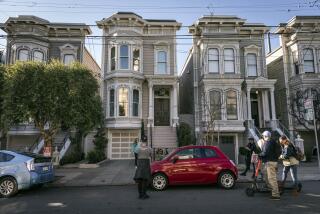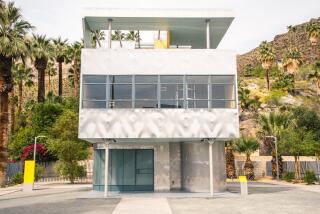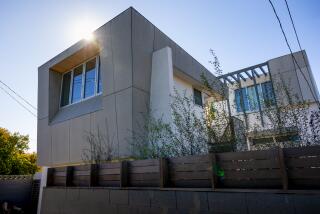North : BREA : Practice House Makes a Perfect Home
On her evening walks nearly a decade ago, longtime resident Yvonne Moran often would pass the cottage that historians call the Practice House, built by young carpentry students in 1926 and later used as a place for schoolgirls to learn homemaking skills.
“I used to think how great it would be to live in a place like that,” Moran said. But the thought of owning any home was a far away one for the single mother of three, struggling to pay the rent on a small apartment with her secretary’s salary.
Recently, Moran and her family have moved into the restored historic landmark, thanks to the city Redevelopment Agency’s affordable housing program for low-income residents.
“I’m really ecstatic. It’s a wonderful feeling” she said. “Being a single mom, I never would have been able to afford this house.”
The three-bedroom house, which was owned by the Brea Olinda Unified School District, barely escaped the wrecking ball in 1989. It was vacant for several years with boarded windows and was slated for demolition with other buildings at the district’s former high school site, which was razed to build a shopping center.
But the landmark gained a last-minute reprieve from the Redevelopment Agency, which then bought it and stored it at several vacant lots over the years. In 1994, after a fire damaged part of the roof, the Practice House was restored and selected to be part of the city’s affordable housing program.
Moran, 42, said she was overjoyed this summer when told that she had been chosen from a pool of applicants to buy the house at market value, about $130,000. The city provided a low-interest $50,000 mortgage, and Moran was able to qualify for another $80,000 mortgage from First Interstate Bank, city officials said. She now pays $750 a month for the property, about $100 a month less than the rent on her apartment.
The city also provided mortgages to low-income families in four surrounding units, officials said.
According to local historians, the Practice House was built as a project for the high school’s carpentry class. The students constructed the frame and installed the plumbing, wiring and cabinets, did the masonry, roofing and other work and built the original furniture.
The school’s home economics department used the house to teach cooking, cleaning, sewing and household repairs. Early school district graduation requirements called for the female students to spend a week living in the house and maintaining it. The house was used later as a teachers’ lounge, preschool care center, counseling office, classroom and continuation school.
“I’ve talked to people who remember going to school here,” Moran said. “It’s a great feeling to be a part of its history.”
More to Read
Sign up for Essential California
The most important California stories and recommendations in your inbox every morning.
You may occasionally receive promotional content from the Los Angeles Times.










